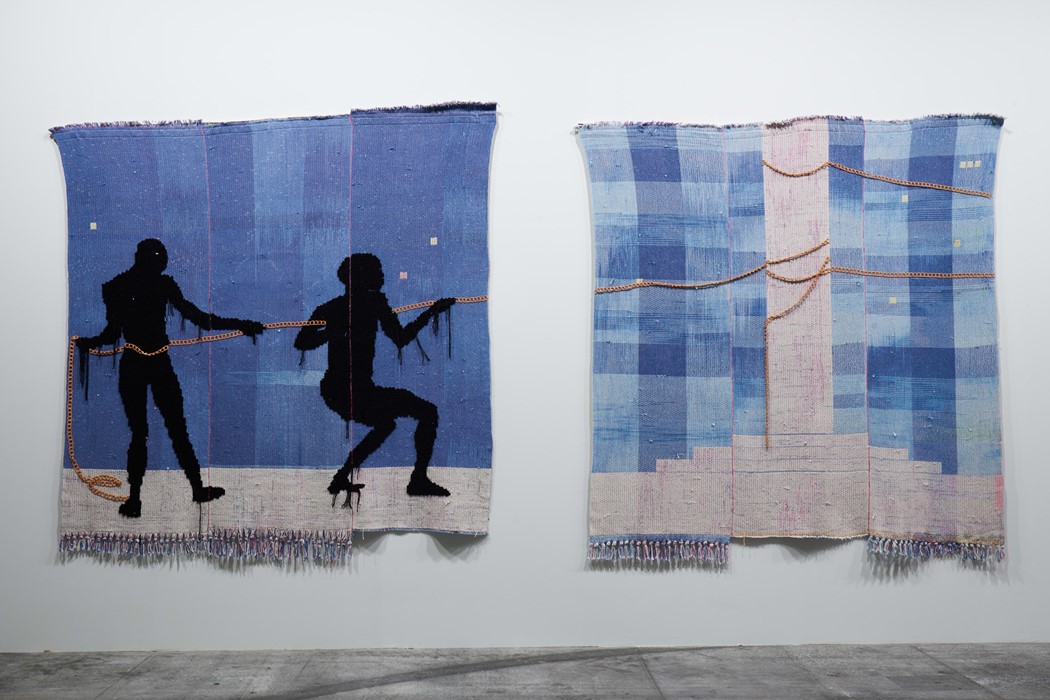From climate anxieties to subversive monuments and the resurgence of religious icons, here’s what stood out at this year’s iteration of the Basel art fair
The temperature in Basel reached a sweltering 37°C last weekend. In the rolling countryside outside the city, the sun beat down on herds of Swiss cows, and swarms of midges buzzed in the long grass. In Basel itself, visitors and residents alike took solace in the city’s most popular summer sport – drifting down the Rhine, buoyed by waterproof bags filled with their belongings – or else in Messe Basel, the (air-conditioned) exhibition site that hosts its eponymous art fair. Often, talk turned to fears about the weather: this June may have recorded record-breaking temperatures, but could it also be the coolest June of the rest of our lives?
Unsurprisingly, these anxieties also filtered through to the art itself, with an emphasis on ecological narratives and sustainable practices cropping up across the 289 gallery booths at Art Basel 2022 (plus the site-specific works that spill out into the city, in the fair’s Parcours sector). That isn’t to say, of course, that Art Basel was without its excesses, having returned to its normal schedule after two years of pandemic-related disruptions.
On the first day alone, Hauser & Wirth sold a 1996 version of Louise Bourgeois’ iconic Spider sculpture for $40 million, a record sale for the late artist’s work that puts her in the top two most expensive female artists of all time. A series of seven photographs that Wolfgang Tillmans took of a Concorde jet also reportedly went for $1 million, while dealers themselves forked out hundreds of thousands just to exhibit monumental installations – from both established and emerging artists – in the Unlimited showcase. Apparently a looming recession means very little in the art world.
Looking past the extortionate sums of money changing hands, though, some more interesting themes began to emerge, from climate-conscious waterworks, to celebrations of collective activism, and art that’s actually … useful? Here, we’ve outlined five of the fair’s most prominent themes.

An ode to protest
The artworks in Art Basel’s Unlimited sector may have been more monumental than ever, but a monumental artwork does not a monument make. On the contrary, exhibitors’ attitudes towards monuments – as in, the kind that have become a centrepiece in anti-racist protests and broader culture wars in recent years – were largely critical, or at least ambivalent. Thomas J Price’s Moments Contained (2022) consisted of a classically-inspired bronze statue depicting a woman in tracksuit pants and a T-shirt, standing at more than three and a half metres tall. The British sculptor’s decision to depict fictional subjects, rather than notable historical or contemporary figures, feels particularly relevant right now, as we reassess the legacy of once-celebrated figures, and whether their memorials deserve to remain on our city streets.
At the other end of the exhibition hall, US artist Diedrick Brackens presented a more explicit take on this theme: his woven frieze shadow raze (2022) depicted figures in the midst of dismantling a pedestal, or else raising it with ropes – it was left intentionally unclear; what mattered was the collectivised approach to rewriting colonial history. See also: Social Cataracts, an off-site installation by Oscar Murillo, which partly comprised fifty vacant chairs, supporting protest-style placards bearing drawings from the Colombian artist’s travels.
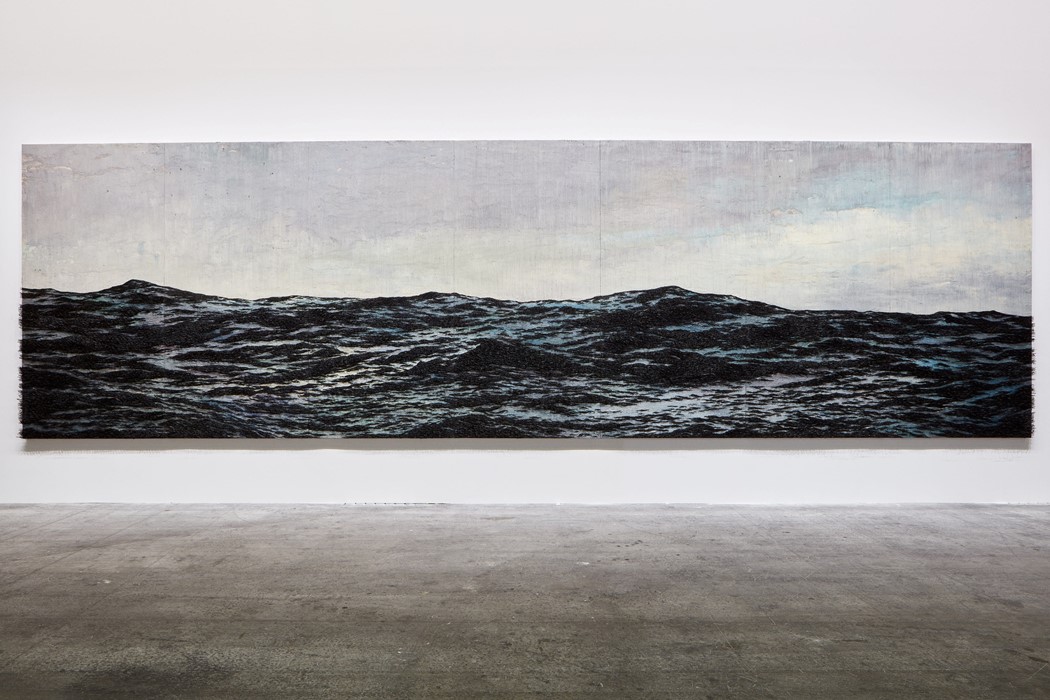
Water, water, everywhere
Maybe it was the heat that made us acutely aware of the closest water source, or maybe rising sea levels have simply made artists and galleries more in tune with ocean. Either way, there seemed to be a flood of aquatic artworks, from Yoan Capote’s Isla (elegia) (2019-2022) – a large-scale meditation on the sea’s beauty and boundaries in oil paint and fish hooks – to another outsized painting by abstract artist Zhou Li, Landscape of nowhere: Water and dreams No.1 (2022).
Along the same lines, the Carlier | Gebauer booth was filled with tentacular sea creatures, courtesy of Turner Prize-winner Laure Prouvost, and the VR program Vive Arts took it one step further, allowing attendees to immerse themselves in the perspective of a whale via Wu Tsang’s immersive film A mighty mass emerges (2022). Tomás Saraceno also aimed to spark a shift away from anthropocentric ideas, contributing sculptures inspired by clouds and soap bubbles as part of his longstanding proposal for an “ethical re-alliance with the environment”. Bojan Šarčević, on the pther hand, sucked the moisture right out of the air at the Antikenmuseum, leaving three chest freezers to fill up with sculptural ice to the nostalgic sounds of Alphaville’s Forever Young, sparking conversation about the climate crisis by committing one of its cardinal sins.
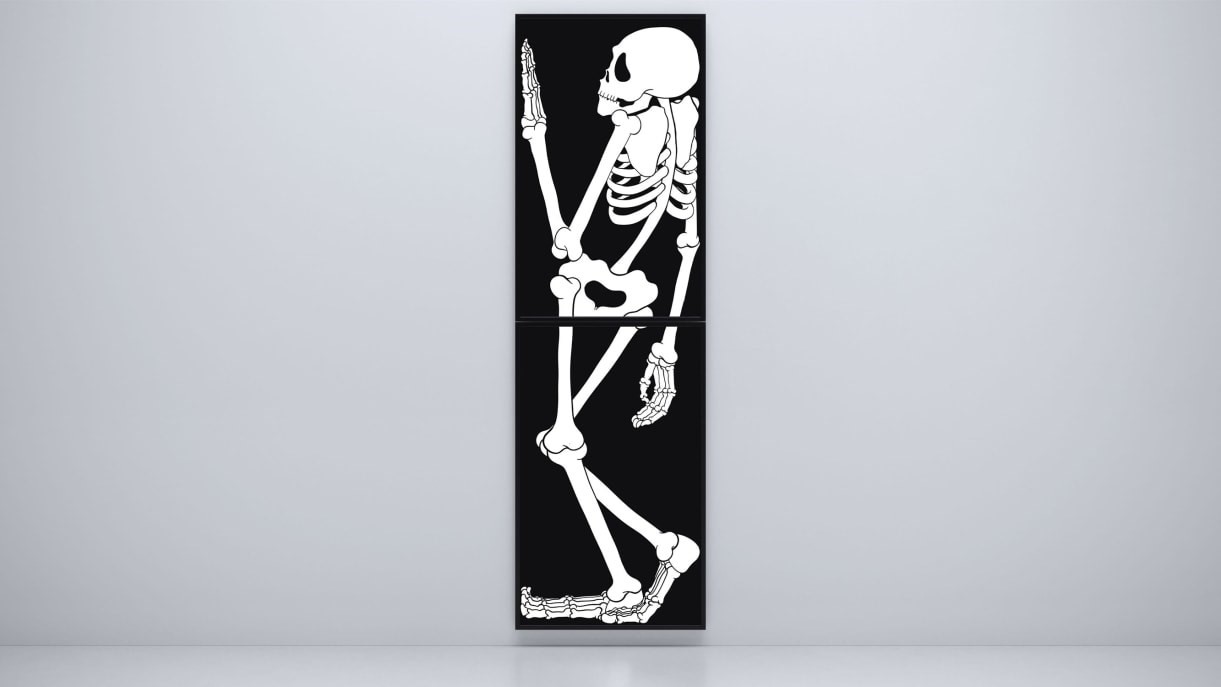
A preoccupation with death, and what happens next
Speaking of the impending apocalypse, it makes sense that many of the offerings at Art Basel 2022 would have one eye trained on death. A morbid sensibility could be found everywhere from the blunt symbolism of Ron Mueck’s Dead Weight (2021) – a massive, cast-iron skull on the pavement outside Basel Historical Museum – to the cartoonish animated skeletons of Özgür Kar at Édouard Montassut’s booth. Looking further into the past was Keith Haring’s mournful, black-and-white painting Untitled, May 7 (1988); depicting a parasite bursting from an egg, it was completed around two years before the artist’s death from Aids-related complications.
Devote enough thought to shuffling off this mortal coil, of course, and you’re eventually going to arrive at its twin preoccupation: what happens next? And so, as Catholicism catches on in New York City counterculture – via only-half-ironic internet memes – and informs new readings of canonical artists such as Andy Warhol, it’s no surprise that religion also reared its head at Art Basel in 2022. Across three galleries, Jordan Wolfson staged a series of gaudy and provocative, crucifix-studded paintings-slash-sculptures, while Tobias Rehberger’s subtones (2017-2022) led viewers into a crypt with a series of neon signs, culminating in an atmospheric room filled with solid “plumes” of smoke lifted from 3D models the artist found online. British artist Suzanne Treister, meanwhile, took a slightly different approach to the afterlife, envisioning distant, post-human futures in the conceptual project SURVIVOR (F) (2016-2019).
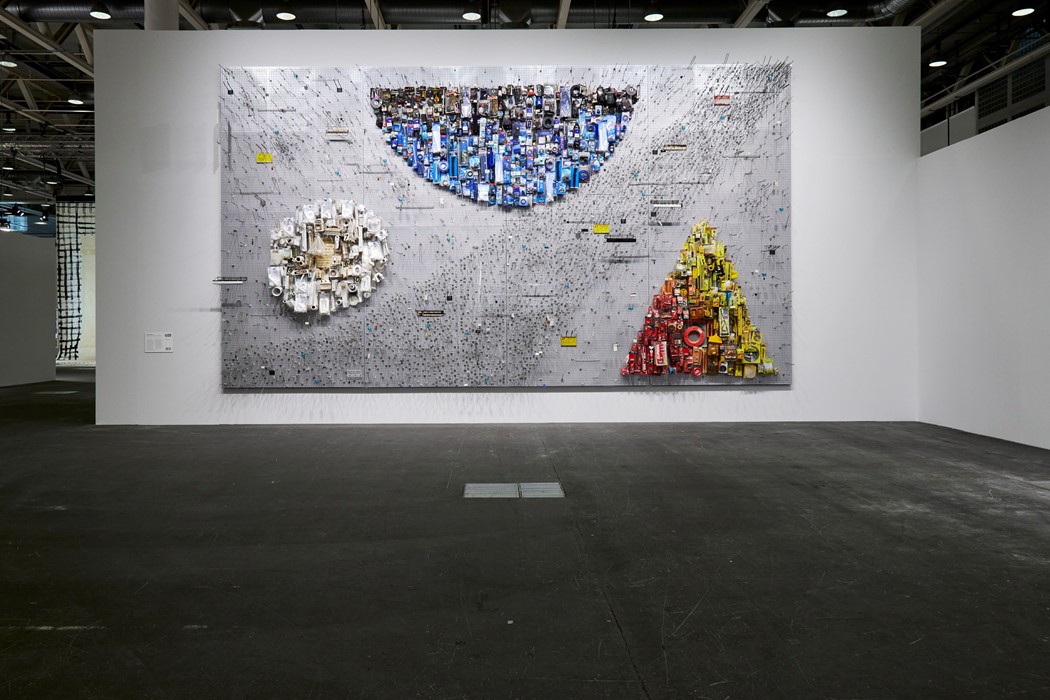
Art with utility
Last year’s Turner Prize turned away from pure aesthetics to focus on a more practical approach to art, shortlisting (for better or worse) artist collectives that blend creativity and social activism. Taking a slightly more balanced approach, Art Basel 2022 featured several prominent works that took useful tools and objects – some of which had already been used by the artist, some of which would go on to be used by the audience – and turned them into works of art in their own right.
At Unlimited, Theaster Gates presented Hardware Store Painting (2020–22), an installation that arranged the inventory of a former family-owned hardware store on Chicago’s South Side on a colossal steel pegboard, while 76 uniforms designed, made, and worn by Andrea Zittel over the course of a decade welcomed visitors into the showspace. Outside of Messe Basel, meanwhile, Bosco Sodi distributed 365 balls of raw clay infused with corn seeds that visitors could take home to plant, effectively spreading small parts of his native Mexico around the world, and evoking the cyclical patterns of the natural environment, agriculture, and migration.
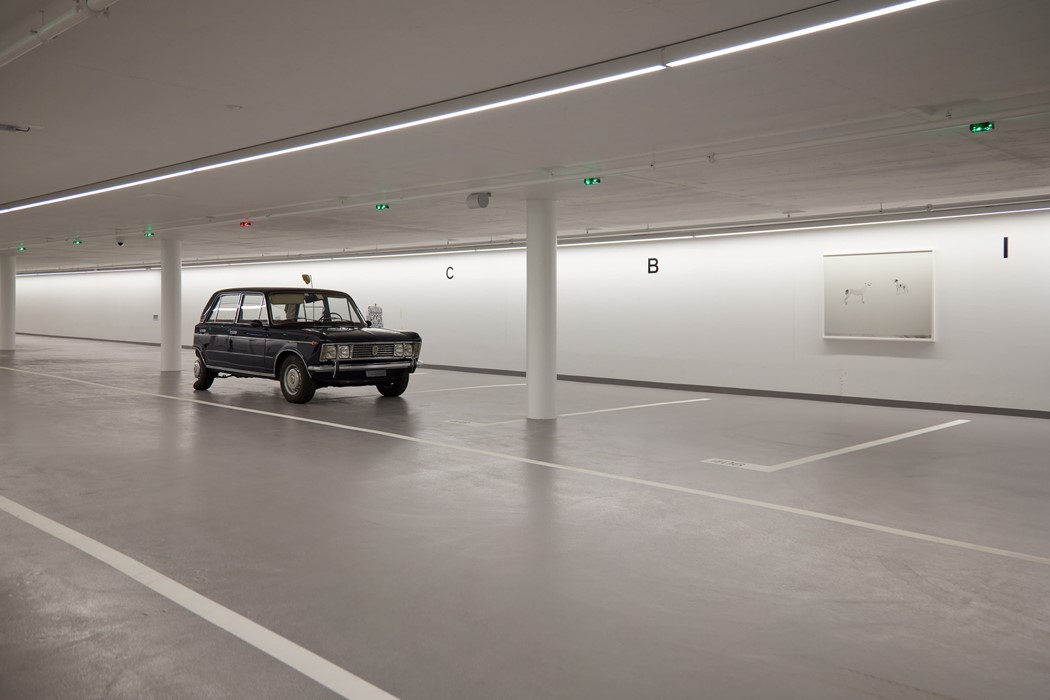
Breaking free from the white cube
In Vandal Lust (2011/2022), Andra Ursuţa literally staged a failed attempt to launch herself out of the gallery space: the tragicomic installation consisted of a trebuchet and a foam and plastic model of the artist herself, which appeared to have been flung into the opposite wall, lying prone beneath a hole in the plaster. Other artists, however, were more successful than Ursuţa’s surrogate in getting beyond the gallery walls.
On the banks of the Rhine, Maria Loboda’s The Year of Living Dangerously (2022) placed reproductions of sculptures by the likes of Jean Arp, Jeff Koons, and Brâncuși alongside plastic waste and driftwood, as if they’d escaped from a nearby museum and washed up as flotsam. Elsewhere, Simon Starling took us into an underground parking garage for his much-talked-about A-A’, B-B’, which saw him slice through a vintage Fiat 125S and a recreation of a famously-severed painting by the 18th century artist Giovanni Battista Tiepolo. Notably, the car park was still in use, and gallery-goers occasionally had to step aside to let amused or disgruntled residents cruise by. But hey, at least it was cool down there.
